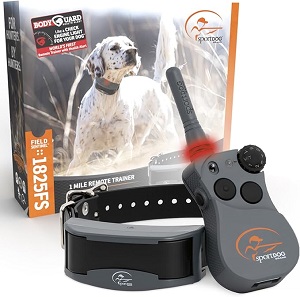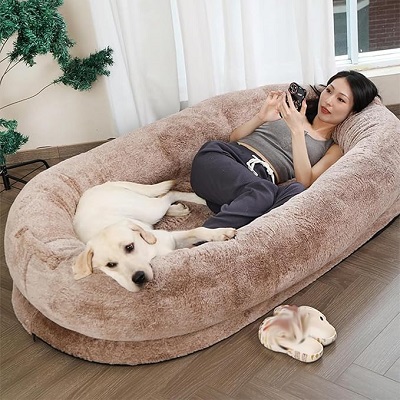
How to Keep Your Dog Cool in Hot Weather
Tips to Keep Your Dog Cool During Summer
As the temperatures rise during the warmer months, it’s important for dog owners to be aware of how heat can affect their pets. Dogs can suffer from heat-related issues such as dehydration, overheating, and even heatstroke, especially during hot and humid weather. Unlike humans, dogs are not able to sweat as efficiently, making them more vulnerable to the dangers of excessive heat.
In this article, we’ll discuss the best ways to keep your dog cool, how to recognize the signs of heat-related distress, and what to do if your dog gets too hot.
1. Why Dogs Are Vulnerable to Heat
Dogs are more susceptible to the heat than humans for several reasons:
- Limited Sweat Glands: Unlike humans, who have sweat glands all over their body, dogs only sweat from their paw pads. This makes it difficult for them to regulate their body temperature effectively.
- Fur Coat: While fur can provide protection from cold temperatures, it can also trap heat in hot weather, making it harder for dogs to cool down.
- Breed-Specific Factors: Some dog breeds, especially brachycephalic breeds (like Bulldogs, Pugs, and Shih Tzus), have a more difficult time breathing and cooling down in the heat. Similarly, larger and heavier dogs may be more prone to heat exhaustion than smaller breeds.
- Age and Health: Older dogs, puppies, and dogs with underlying health conditions such as heart disease, respiratory issues, or obesity, may struggle more in the heat.
2. Signs Your Dog Is Overheating
Essentials for Your Newly Adopted Pet
Welcoming a shelter pet into your life is a beautiful journey. Here are some handpicked items to help your new friend feel safe, loved, and right at home:
It’s essential to recognize the signs of overheating so you can act quickly to prevent heatstroke, which is a medical emergency.
2.1. Excessive Panting
While panting is normal, excessive or rapid panting can be a sign your dog is struggling to regulate their body temperature.
2.2. Drooling
Excessive drooling can indicate that your dog is overheating. This often happens when they are panting hard and trying to cool down.
2.3. Lethargy or Weakness
If your dog is acting tired, sluggish, or disoriented, they may be overheating and struggling to cope with the heat.
2.4. Vomiting or Diarrhea
These symptoms can be signs of heatstroke. If your dog is vomiting, it may indicate that their body is in distress.
2.5. Dark or Bright Red Gums
If your dog’s gums turn bright red or dark in color, this could be a sign of overheating or heatstroke. Healthy gums should be a pale pink color.
2.6. Collapsing or Seizures
In severe cases of heatstroke, a dog may collapse or have seizures. This is an emergency, and you should seek veterinary help immediately.
3. How to Keep Your Dog Cool in Hot Weather
3.1. Provide Plenty of Fresh, Clean Water
Always make sure your dog has access to fresh water. In hot weather, dogs need to drink more than usual to stay hydrated. Carry a portable water bowl during walks or outdoor play to keep your dog hydrated, especially on long walks or hikes.
3.2. Avoid Walks During Peak Heat Hours
The best time to take your dog for a walk is early in the morning or late in the evening when the temperatures are cooler. Avoid walking your dog during the hottest parts of the day (typically between 10 a.m. and 4 p.m.) as the pavement can burn their paw pads and lead to overheating.
3.3. Use Cooling Mats or Beds
Cooling mats are specially designed to help regulate your dog’s temperature. These mats absorb heat from your dog's body and provide a cool surface for them to rest on. Place cooling mats in your dog’s favorite resting areas to help them stay comfortable indoors.
3.4. Create a Cool Resting Space Indoors
Ensure your dog has access to a cool, shaded area inside your home where they can relax. Set up a cool spot with a fan or air conditioner to help lower the temperature. Avoid placing your dog in areas that are too warm, such as direct sunlight or closed rooms without airflow.
3.5. Use a Doggie Pool or Sprinkler
If your dog enjoys water, consider getting a kiddie pool or setting up a sprinkler in your backyard. Many dogs love playing in the water, and it’s a great way for them to cool off while having fun. Just ensure the water is not too cold, as this can cause shock to their system.
3.6. Provide Shade Outdoors
If your dog spends time outdoors, always ensure there is access to shade. A shaded area under a tree or a doggy play tent can protect your dog from the harsh sun and prevent overheating.
3.7. Keep Their Coat Trimmed
For dogs with thick or long coats, keeping their fur trimmed can help them stay cooler. However, avoid shaving your dog completely, as their coat provides protection from the sun and helps regulate their body temperature. Consult your groomer for the best way to trim your dog’s coat for hot weather.
3.8. Dress Them in Cooling Gear
Special cooling vests and bandanas are designed to lower your dog’s body temperature. These garments are often made from materials that absorb water, which, when evaporated, cools down the dog’s body. You can soak them in cool water and put them on your dog during outdoor activities to help keep them cool.
4. Cooling Treats and Ice Cubes
Giving your dog ice cubes or cooling treats can help them cool down. Ice cubes are a simple and easy way to provide relief, and many dogs enjoy them as a tasty treat. You can also freeze treats or water in ice cube trays to create a fun, cooling snack.
Some pet stores offer special frozen treats made with natural ingredients like yogurt or peanut butter that can also help keep your dog cool. Be sure to keep the portion sizes appropriate to avoid overfeeding.
5. How to Safely Transport Your Dog in Hot Weather
If you need to transport your dog during hot weather, it’s important to keep their safety in mind.
- Never leave your dog in the car: Even with the windows cracked, the temperature inside a parked car can rise to dangerous levels within minutes, leading to heatstroke or even death.
- Use air conditioning: When traveling with your dog, use the air conditioning in the car to keep them cool. If air conditioning isn’t available, make frequent stops and let your dog out to cool off in shaded areas.
- Bring water and cooling items: Always carry water, a portable bowl, and any cooling items like cooling mats or bandanas to keep your dog comfortable during the ride.
6. Recognizing and Treating Heatstroke in Dogs
Heatstroke can occur quickly if a dog becomes overheated, so it’s important to act fast. Here’s what you should do if you suspect your dog is suffering from heatstroke:
6.1. Move Your Dog to a Cool Area
Get your dog out of the heat and into a shaded, cool place. A basement, air-conditioned room, or shaded outdoor area is ideal.
6.2. Offer Water
Give your dog small amounts of cool (not cold) water to drink. Do not force them to drink, but offer it frequently.
6.3. Cool Your Dog Down
Use a cool, damp towel to gently wipe your dog’s body, focusing on their paws, ears, and belly. You can also run cool (not cold) water over their body or let them sit in a shallow pool of water.
6.4. Take Your Dog to the Vet
If your dog is showing signs of heatstroke—such as vomiting, diarrhea, or confusion—seek immediate veterinary care. Heatstroke can lead to organ failure, brain damage, and even death if not treated promptly.
Conclusion- Keeping your dog cool in hot weather is crucial for their health and well-being. With the right precautions—such as providing plenty of water, avoiding peak heat hours, using cooling mats, and monitoring their behavior—you can help your dog stay safe and comfortable during the warmer months.
Be proactive about preventing overheating and heatstroke, and always consult with your vet if you're concerned about your dog’s health in hot weather. By taking these steps, you can ensure your dog enjoys the summer while staying cool, hydrated, and healthy.
Affiliate Products
We may earn a small commission when you shop through our links — it helps us keep sharing love and care for every dog out there, at no extra cost to you.
Up to 75% Discount

Dog Collar with Health Monitoring
BUY NOW »
Up to 55% Discount

Luxury Faux Furhuge Napping Bed
BUY NOW »

